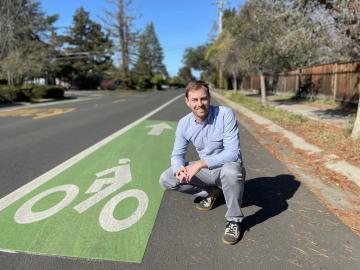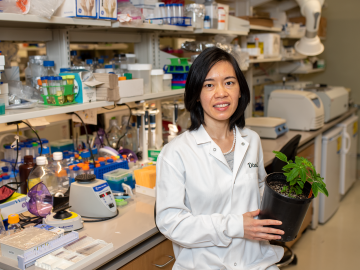
Filter News
Area of Research
- Advanced Manufacturing (1)
- Biology and Environment (34)
- Computational Biology (1)
- Computer Science (2)
- Electricity and Smart Grid (2)
- Energy Science (42)
- Functional Materials for Energy (1)
- Fusion and Fission (25)
- Fusion Energy (4)
- Isotopes (19)
- Materials (32)
- Materials for Computing (2)
- National Security (19)
- Neutron Science (9)
- Nuclear Science and Technology (19)
- Quantum information Science (5)
- Supercomputing (45)
News Type
News Topics
- (-) Artificial Intelligence (85)
- (-) Clean Water (16)
- (-) Composites (15)
- (-) Grid (35)
- (-) Isotopes (41)
- (-) Machine Learning (39)
- (-) Nuclear Energy (79)
- (-) Quantum Science (52)
- 3-D Printing/Advanced Manufacturing (73)
- Advanced Reactors (17)
- Big Data (49)
- Bioenergy (74)
- Biology (86)
- Biomedical (46)
- Biotechnology (25)
- Buildings (37)
- Chemical Sciences (46)
- Computer Science (127)
- Coronavirus (23)
- Critical Materials (6)
- Cybersecurity (20)
- Education (2)
- Emergency (3)
- Energy Storage (47)
- Environment (130)
- Exascale Computing (53)
- Fossil Energy (6)
- Frontier (47)
- Fusion (47)
- High-Performance Computing (92)
- Hydropower (6)
- Irradiation (1)
- ITER (5)
- Materials (82)
- Materials Science (75)
- Mathematics (8)
- Mercury (7)
- Microelectronics (3)
- Microscopy (31)
- Molten Salt (3)
- Nanotechnology (29)
- National Security (67)
- Neutron Science (95)
- Partnerships (42)
- Physics (40)
- Polymers (14)
- Quantum Computing (37)
- Security (19)
- Simulation (46)
- Software (1)
- Space Exploration (14)
- Statistics (2)
- Summit (42)
- Transportation (41)
Media Contacts

A study led by researchers at ORNL could help make materials design as customizable as point-and-click.

When Andrew Sutton arrived at ORNL in late 2020, he knew the move would be significant in more ways than just a change in location.

Unequal access to modern infrastructure is a feature of growing cities, according to a study published this week in the Proceedings of the National Academy of Sciences

ORNL scientists had a problem mapping the genomes of bacteria to better understand the origins of their physical traits and improve their function for bioenergy production.

David McCollum is using his interdisciplinary expertise, international networks and boundless enthusiasm to lead Oak Ridge National Laboratory’s contributions to the Net Zero World initiative.

The rapid pace of global climate change has added urgency to developing technologies that reduce the carbon footprint of transportation technologies, especially in sectors that are difficult to electrify.

A force within the supercomputing community, Jack Dongarra developed software packages that became standard in the industry, allowing high-performance computers to become increasingly more powerful in recent decades.

A team of researchers working within the Center for Bioenergy Innovation at ORNL has discovered a pathway to encourage a type of lignin formation in plants that could make the processing of crops grown for products such as sustainable jet fuels easier and less costly.

ORNL, TVA and TNECD were recognized by the Federal Laboratory Consortium for their impactful partnership that resulted in a record $2.3 billion investment by Ultium Cells, a General Motors and LG Energy Solution joint venture, to build a battery cell manufacturing plant in Spring Hill, Tennessee.

Spanning no less than three disciplines, Marie Kurz’s title — hydrogeochemist — already gives you a sense of the collaborative, interdisciplinary nature of her research at ORNL.


